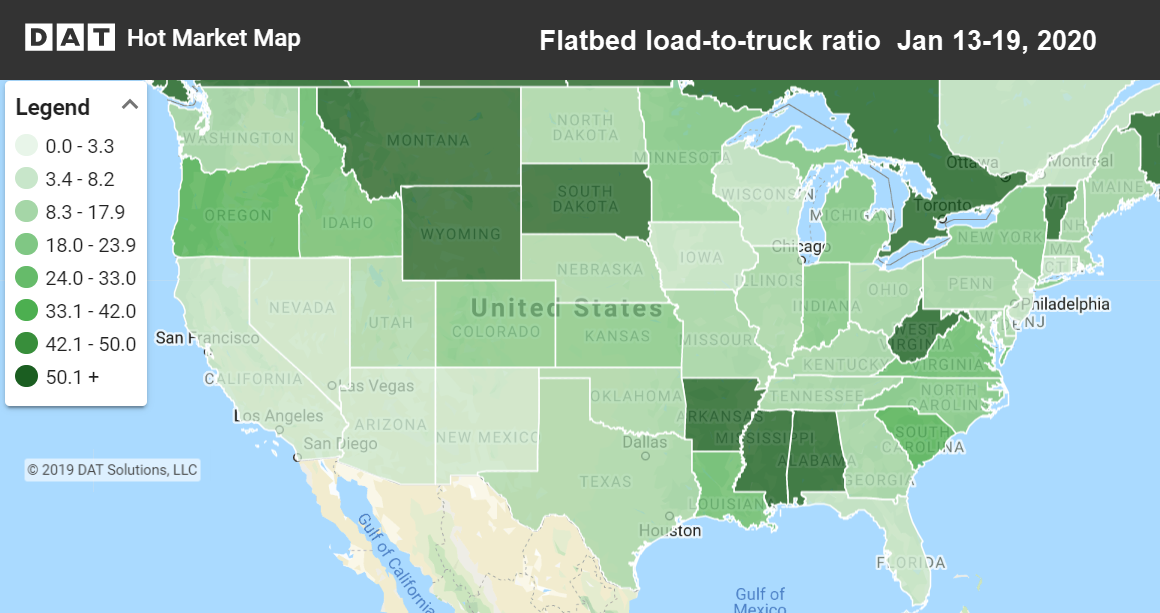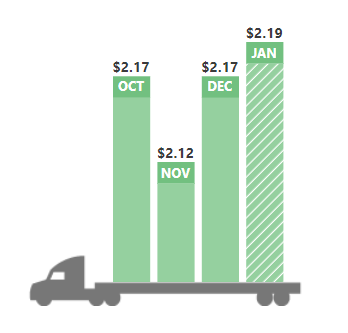Flatbed Rates Surge in the Off-Season
Print this Article | Send to Colleague
Flatbed Rates Surge in the Off-Season
By Mark Montague
Van and reefer rates have peaked late in the fourth quarter in recent years, thanks to the impact of e-commerce. Flatbed freight, however, has been relatively unaffected by retail and consumer trends.
Instead, we generally see some spikes for flatbed freight during November, as Christmas trees are harvested and moved to urban areas. This year, however, there were tree shortages in some areas, contributing to a relatively quiet season for flatbed equipment.
More recently there have been some interesting spikes. The national average flatbed rate increased by 5 cents in December, month over month, and January has seen an uptick so far, even as van and reefer rates start to dip seasonally.
So what’s up with flatbed?

Hot Market Maps, available in DAT Power and DAT RateView, show that flatbeds are harder to find in the Upper Rocky Mountain states and in parts of the South. The darker the color, the less competition there is for freight.
Oil Production Increases Demand for Flatbeds
A quick look at the most recent Baker-Hughes report reveals an uptick in oil rig counts. Three wells opened in New Mexico, five in Texas, and another three were added in North Dakota. Overall, the U.S. gained 15 oil rigs, while Canada added 41 active wells. This signals a reversal of 2019 trends when dozens of wells ceased operation.
But the really big news is the announcement that TC Energy will proceed with the completion of the Keystone XL Pipeline.
The Keystone XL Pipeline connects the tar sands of Alberta, Canada, with the lower United States. It’s an $8 billion project that is expected to yield an additional 830,000 barrels of oil when fully operational. The key states for construction include the Upper Rocky Mountains and Plains states of Montana, Nebraska, and South Dakota. Press releases indicate that full construction will begin this spring, but supplies and materials have already started to move.
I took a few minutes to download some regional views of the U.S. flatbed rates from DAT RateView. The regional trends confirmed that rates have been rising most sharply in the West and Mountain states. Flatbed pricing is gaining strength in other regions as well, except for the Upper Atlantic U.S. and Central Canada.
The upward trend continues, even though oil prices have been relatively stable. That’s because major investments in pipeline and drilling projects can be expected to drive flatbed rates higher through the so-called “slow” season and into the summer of 2020.
 Even as van and reefer rates have started to dip seasonally, the national average flatbed rate has increased 7 cents since November.
Even as van and reefer rates have started to dip seasonally, the national average flatbed rate has increased 7 cents since November.

